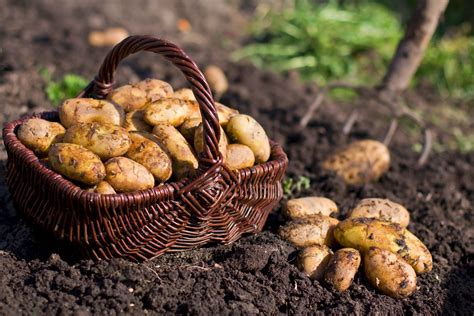How to Farm Potatoes: A Comprehensive Guide for Beginners
Potatoes are a staple crop worldwide, loved for their versatility and nutritional value. Whether you're aiming for a bountiful harvest for your family or exploring the possibilities of small-scale farming, this guide will equip you with the knowledge to successfully cultivate your own potatoes. We'll cover everything from selecting the right seed potatoes to harvesting your delicious crop.
Choosing the Right Potato Variety
Selecting the right potato variety is crucial for a successful harvest. Consider these factors:
- Climate: Different potato varieties thrive in different climates. Some are better suited to hot, dry conditions, while others prefer cooler temperatures. Research varieties that are well-adapted to your local climate.
- Growing Season: Choose a variety with a growing season that matches your region's frost-free period.
- Desired Use: Consider whether you want potatoes for baking, boiling, frying, or other uses. Different varieties have varying textures and flavors that are better suited for specific cooking methods. Russet potatoes, for example, are excellent for baking, while red potatoes hold their shape well when boiled.
- Disease Resistance: Opt for varieties known for their resistance to common potato diseases like blight and scab. This can significantly reduce the need for chemical treatments.
Tip: Check with your local agricultural extension office or gardening center for recommendations on varieties well-suited to your area.
Preparing the Soil for Planting
Potatoes require well-drained, loose soil rich in organic matter. Here's how to prepare your planting area:
- Soil Test: Conduct a soil test to determine the pH level and nutrient content. Potatoes prefer slightly acidic soil with a pH between 5.0 and 6.0. Amend the soil with compost or other organic matter to improve drainage and fertility if necessary.
- Tilling: Till the soil to a depth of 8-12 inches to break up clumps and create a loose, workable texture. Remove any rocks or debris.
- Sunlight: Choose a sunny location that receives at least six hours of direct sunlight per day.
Planting Your Seed Potatoes
- Seed Potatoes: Purchase certified seed potatoes from a reputable supplier. Avoid using potatoes from the grocery store, as these may not be disease-free.
- Cutting Seed Potatoes (Optional): Larger seed potatoes can be cut into pieces, each containing at least two "eyes" (buds). Allow the cut pieces to dry for a few days before planting to prevent rot.
- Planting Depth: Plant seed potatoes 4-6 inches deep and 12-18 inches apart, depending on the variety.
- Spacing: Space rows 2-3 feet apart to allow for adequate airflow and easy harvesting.
Caring for Your Potato Plants
- Watering: Provide consistent moisture, especially during dry periods. Aim for about one inch of water per week. Avoid overwatering, which can lead to rot.
- Weed Control: Regularly remove weeds to prevent competition for nutrients and water. Mulching can help suppress weeds and retain moisture.
- Hilling: As the potato plants grow, gradually hill soil around the base of the plants. This encourages the formation of more potatoes and protects them from sunlight. Hilling is crucial for maximizing your yield.
- Pest and Disease Control: Monitor your plants regularly for signs of pests or diseases. Take appropriate action if necessary, using organic methods whenever possible.
Harvesting Your Potatoes
- Harvest Time: Harvest potatoes when the plants begin to flower and the foliage starts to die back. This usually occurs 70-100 days after planting, depending on the variety.
- Harvesting Techniques: Carefully dig up the potatoes using a garden fork or shovel. Avoid damaging the potatoes.
- Curing: After harvesting, allow the potatoes to cure in a cool, dark, and well-ventilated area for 7-10 days. This allows the skins to toughen and improves storage life.
Storing Your Potato Harvest
Proper storage is crucial for extending the shelf life of your potatoes. Store them in a cool, dark, and dry place with good ventilation. Avoid storing potatoes in direct sunlight or in temperatures below freezing.
By following these steps, you'll be well on your way to a successful potato harvest. Happy farming!
